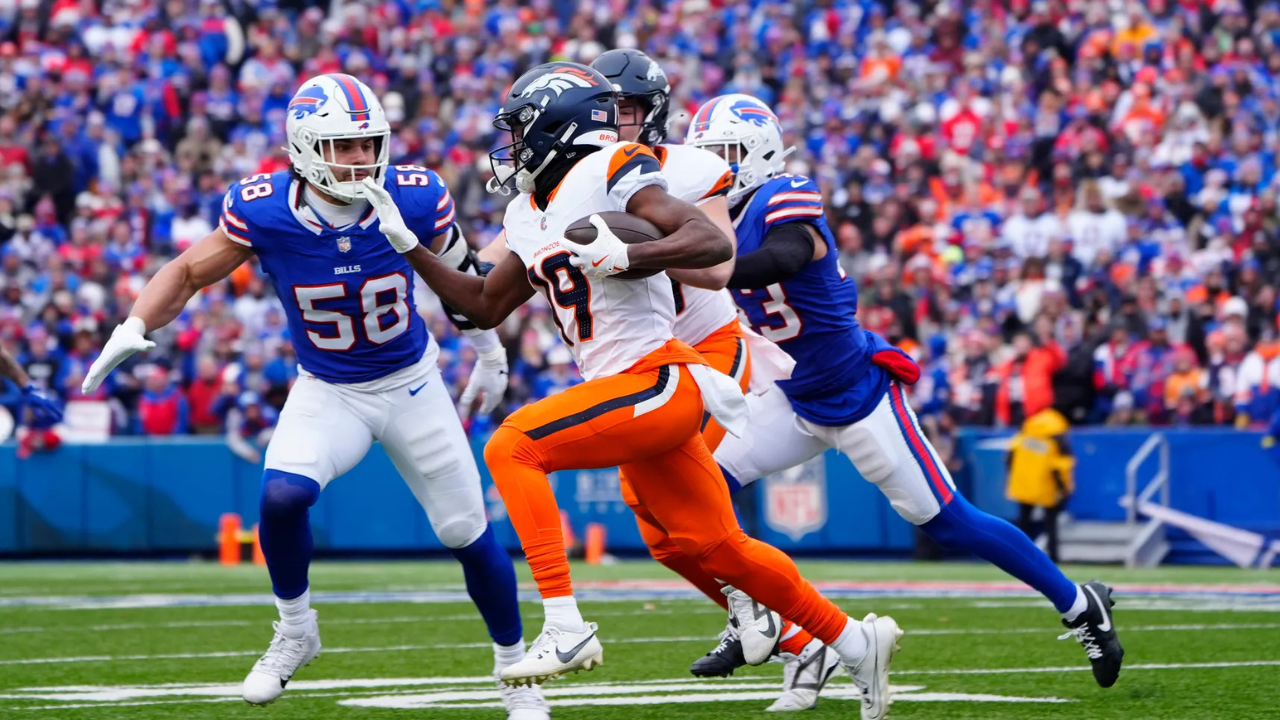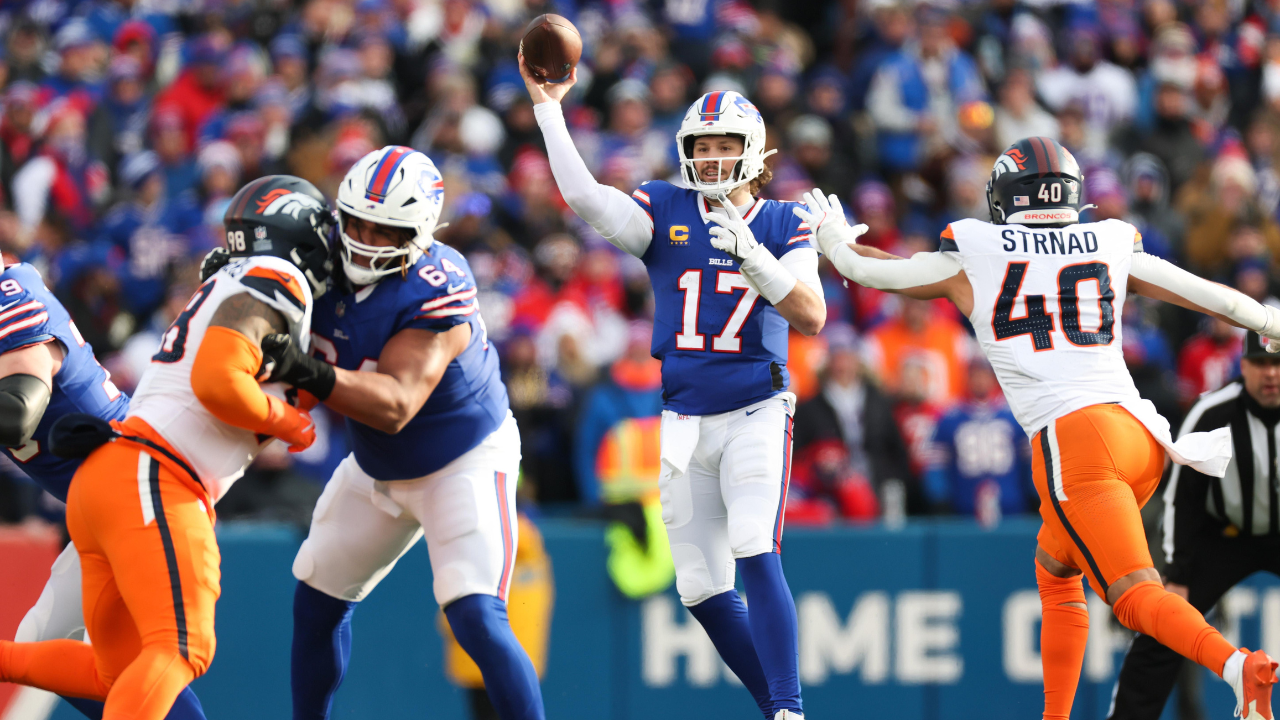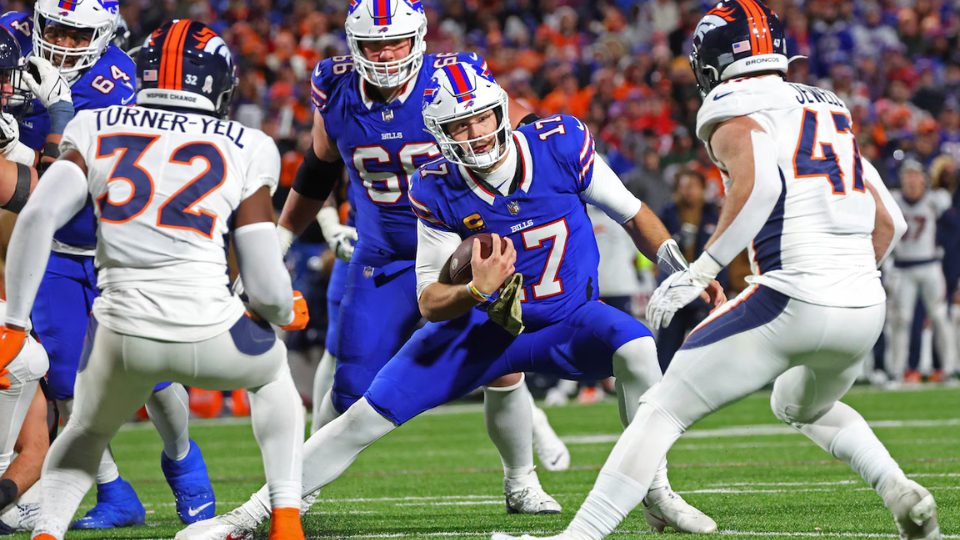The Denver Broncos were playing against the Buffalo Bills in a regular season game that was much anticipatedand fans were at the edge of their seats. The two teams had good rosters and this was a major battle that had playoff implications. Tracking the Denver Broncos vs Buffalo Bills match player stats offers a clear picture of individual performances, team strategies, and standout moments that shaped the outcome.
In this breakdown, we are going to discuss best quarterbacks, rushing and receiving leaders, defensive highlights, and situational statistics. Be it an analysis of the efficiency of the team or seeking the players who made the difference, these statistics give a full picture of the way the game went and which performances actually took off.
Game Overview
On January 12, 2025, at Highmark Stadium in Orchard Park, the Denver Broncos and the Buffalo Bills collided in the AFC Wild-Card round of the NFL Playoffs. The Bills took over the game and ran away with it by 31 goals to 7.

The tide turned quickly, Denver with a long TD on the first play of the game, Bo Nix to Troy Franklin.But Buffalo responded and never relinquished it with long sustained drives and big plays. The turning points were the second-half performance of Josh Allen, and the blowout in the fourth quarter that left no chance for Denver.
Broncos vs Bills: Team-Level Statistics
Statistic
| Statistic | Denver Broncos | Buffalo Bills |
| First Downs | 13 | 26 |
| Total Yards | 224 | 471 |
| Yards per Play | 5.3 | 6.5 |
| Turnovers | 0 | 0 |
| Penalties | 3 (27 yards) | 7 (45 yards) |
In short, these Denver Broncos vs Buffalo Bills match player stats at the team level highlight Buffalo’s superior execution: they moved the ball more efficiently, kept drives alive, and didn’t rely on forcing turnovers to win.
Quarterback Performance
Denver QB Bo Nix made 13 out of 22 passes with 144 yards, 1 TD, 0 interceptions and sacked 2 times with 14 yards. Josh Allen on the other side completed 20-26 of his 272 passing yards, 2 touchdowns, 0 picks, and was also sacked twice.
Allen obviously was on the better end, as his ball-placement and efficiency was more acute, and the fact that he was able to stretch the field allowed the Bills to dominate the game. In the context of this Denver Broncos vs Buffalo Bills match player stats, Allen’s composure and big-play ability were decisive in driving Buffalo’s dominant offensive showing.
| Player | Carries / Receptions | Yards | Touchdowns |
| James Cook (BUF) | 23 carries | 120 yards | 1 TD |
| Ty Johnson (BUF) | 9 carries, 2 receptions | 44 rush / 26 rec = 70 total yards | 1 receiving TD (24-yd) |
| Bo Nix (DEN) | 4 carries | 43 yards | 0 TD |
| Courtland Sutton (DEN) | 5 receptions | 75 yards | 0 TD |
| Troy Franklin (DEN) | 2 receptions | 54 yards | 1 TD (43-yard) |
| Curtis Samuel (BUF) | 3 receptions | 68 yards | 1 TD (55-yard) |
| Khalil Shakir (BUF) | 6 receptions | 61 yards | 0 TD |
Efficiency & Situational Stats
Denver only turned 2 out of 9 third-down attempts (22.2 per cent) and Buffalo had 8 out of 15 (53.3 per cent). Denver had a 1-3 (33.3) on fourth downs, whereas the Bills had a 2-2 (100) conversion.

Denver did not succeed on its only attempt (01) in the red zone, and Buffalo did the same (20percent) out of 5.
Buffalo had a play average of 6.5 yards, in comparison to 5.3 yards in Denver, which was more effective in advancing the ball. Nobody threw the ball, and, therefore, the momentum was more based on the constant drives of Buffalo than on the abrupt shift due to errors.
Defensive & Special Teams Highlights
The defense of Denver made 2 sacks and 3 tackles for loss. They did not compel any turnovers. Matt Milano and Greg Rousseau were the main contributors, with a sack each.
The Broncos had a fake punt earlier in the game on special teams, which did not work out later. Buffalo Tyler Bass scored with field goals (a 27-yard FG).
Implication: The defensive pressure exhibited by the Bills served to stall Denver and strong special teams and red-zone performance allowed Buffalo to remain in control. Together, these phases reinforced why the Denver Broncos vs Buffalo Bills match player stats tilted decisively toward Buffalo.
Read Also: Aaryaeditz Org: Your Go-To Platform for Free Photo & Video Editing Tools
Standout Players & Key Performers
Josh Allen (Bills, QB): He was very poised and efficient, making 20 out of 26 passes and two touchdowns with 272 yards. His two-threat capacity, which contributed 46 yards in the field, had Denver at bay.
James Cook (Bills, RB): Cook had 23 carries, 120 rushing yards and one touchdown. His power and consistent running was the key to the tempo control of Buffalo.
Troy Franklin (Broncos, WR): Franklin is a so-called hidden hero as he caught only two passes, but one of them was a 43-yard touchdown with a significant boost to Denver.

These performances were critical: Allen orchestrated the offense methodically, Cook ground down Buffalo’s drives, and Franklin delivered Denver’s only explosive moment in an otherwise one-sided Denver Broncos vs Buffalo Bills match player stats story.
Statistical Takeaways & Trends
The stylistic strength that was apparent in the overwhelming performance of Buffalo was a balanced offense capable of running efficiently (more than 200 rushing yards) and remaining accurate in the pass game. The fact that they managed to maintain long drives, and they had more than 23 additional minutes in time of possession, was a good indication of control.
The Bills on the defensive side restricted the third-down conversions of Denver (2-of-9), virtually stopping the Broncos continuous drives.
In future Broncos-Bills games, Buffalo can continue to press more on their run-to-pass ratio, and Denver should become more efficient on third-down and find a means of breaking that time-of-possession advantage.
This match might influence the approaches of both teams: Bills might go even further with clock management, whereas Denver should gain the ability to resist in the initial drives and enhance their ability to work under high pressure.
Final Word
The Denver Broncos vs Buffalo Bills match player stats highlighted Buffalo’s dominance in both offense and defense. The accurate passing and dual threat capability of Josh Allen and the strength of the running of James Cook created the tone, and Denver had difficulty maintaining drives.
Third-down ineffectiveness and few big plays had Denver on the defensive. The fans and analysts must observe how the time of possession, equal offense and individual performances played a role in the result and provide information about the strategies and trends that will be applied in future games between the Broncos and the Bills.
Read More: VIPRow.us.com: The Ultimate Source for Live Sports Streaming

